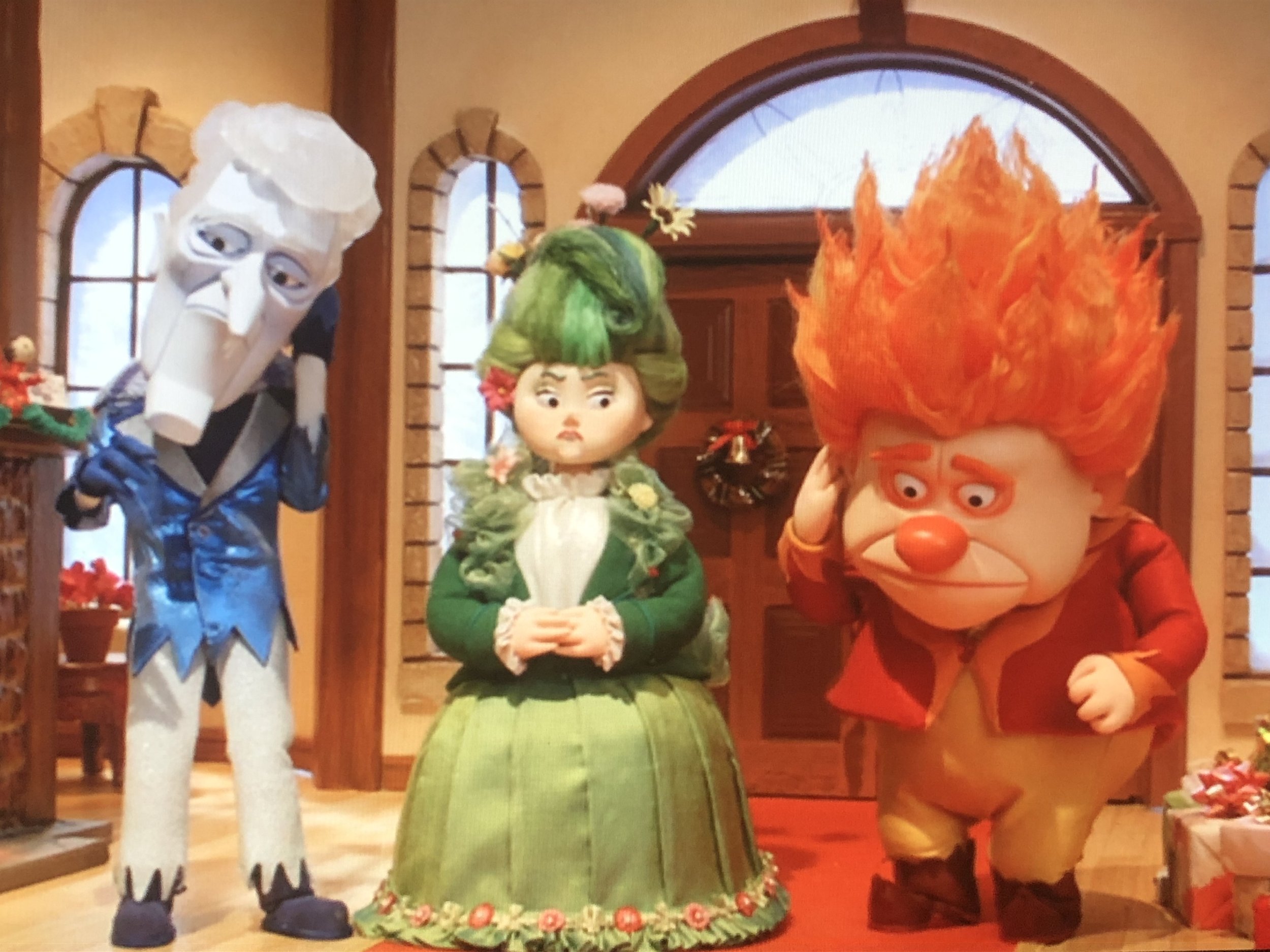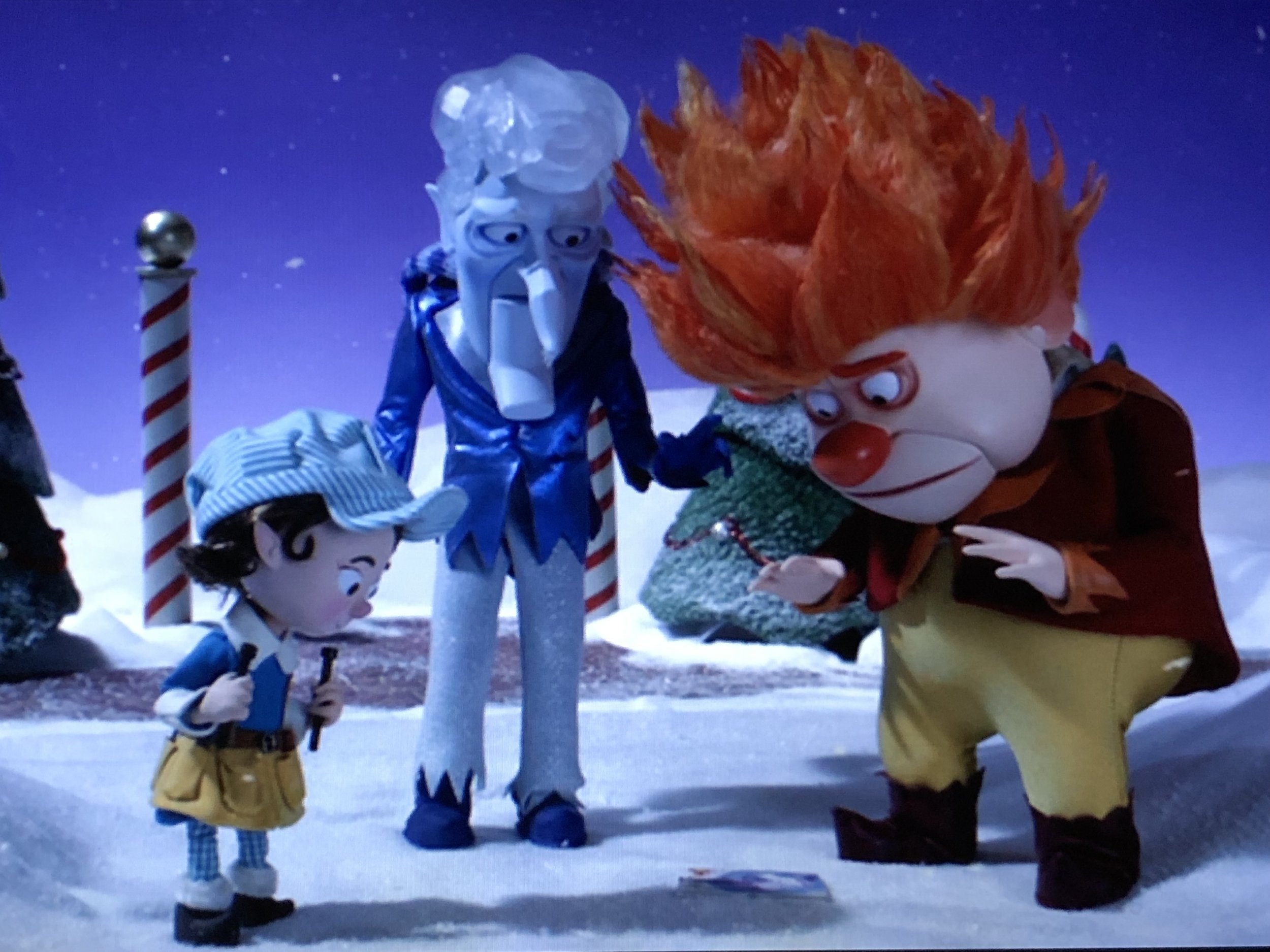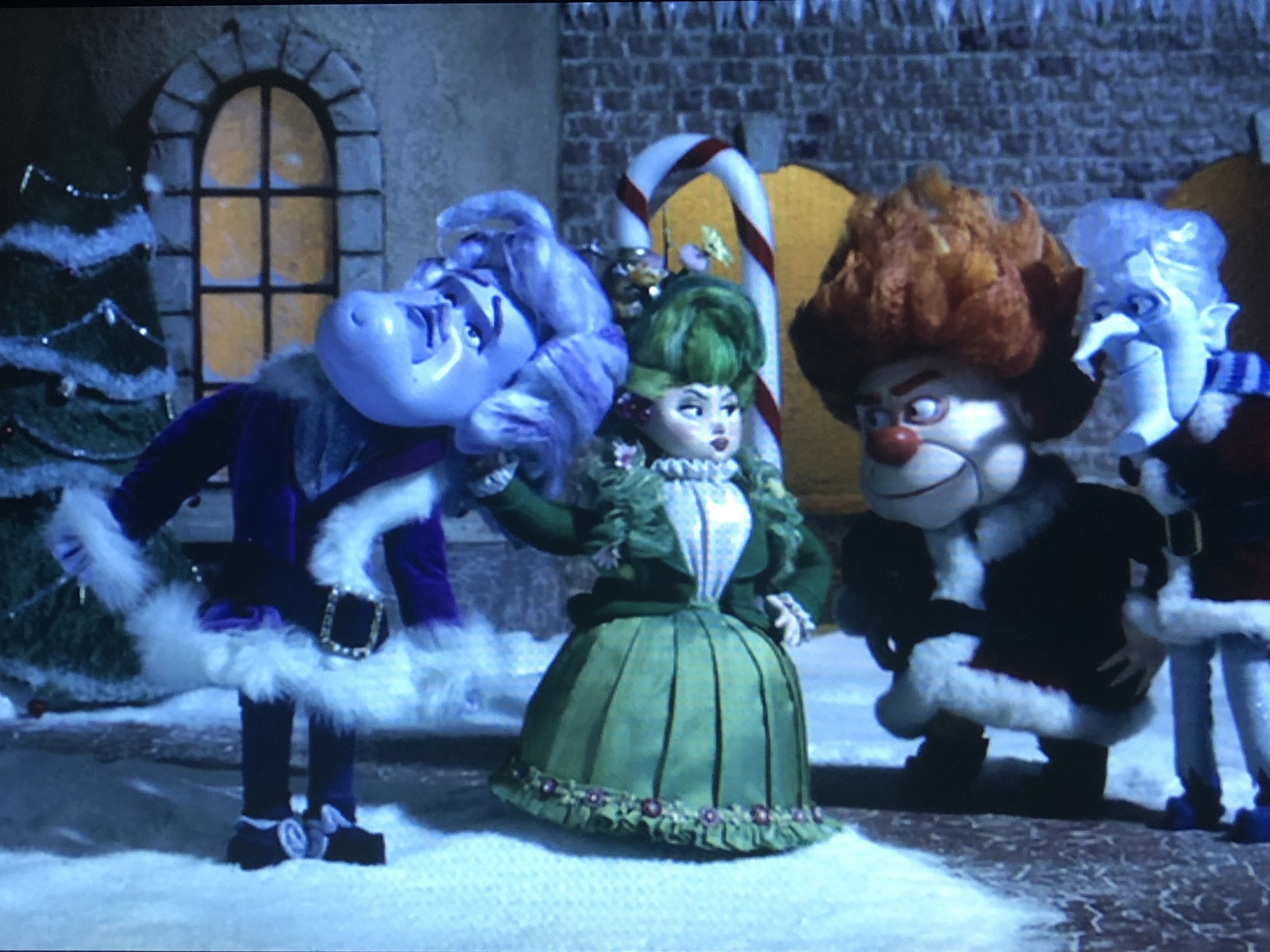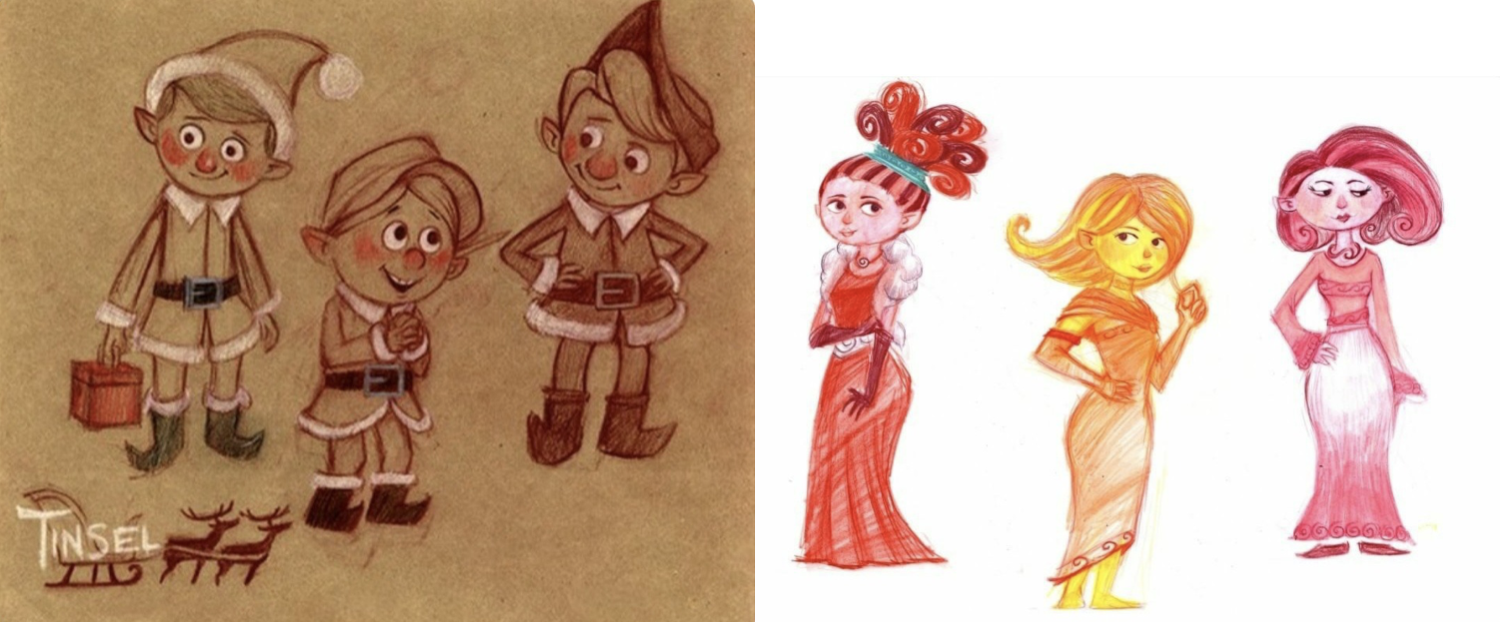A Miser Brothers’ Christmas: “Too Much?”
In 1987, after many years of unsuccessful television programming, Rankin/Bass Animated Entertainment closed its doors. Despite the studio’s shutdown, Rankin/Bass’s specials are still beloved by people of all ages today. The introduction of VHS and DVD allowed these cult classics to be cherished by new generations. Gone are the days that you had to wait for a single day in December for each special to air once and gone was the remorse you’d feel if you missed them. These specials can now be viewed again and again at any time of the holiday season (or whole year, if you enjoy violating the Yuletide Law).
Arthur Rankin Jr. and Jules Bass parted ways for good, and went on to work on a few more various projects. Jules Bass retired from producing and directing animation to write a few books for children. Recently, he returned as a solo consulting producer for the short-lived Thundercats reboot, Thundercats Roar.
Meanwhile, Arthur Rankin Jr. continued directing and producing animation. In 1999, Rankin Jr. was one of three producers on Warner Bros.’ animated adaptation of Rodger & Hammerstein’s musical, The King and I. Rankin Jr. was also the executive producer for the very last Rankin/Bass Christmas special, Santa, Baby!, which aired 2001 and starred a predominantly Black cast, including singers Patti LaBelle and Eartha Kitt. Both projects were met with little positive reception (particularly the King and I for its racist portrayals of Southeast Asian culture). Rankin Jr. passed away in 2014 at his home in Bermuda at the age of 89.
Rankin/Bass’s specials and films rose in popularity in the late ‘80s due to their more frequent airings on television during the holidays and high home video sales. Because of this success, a wave of new nostalgia-inspired Christmas specials and films swept theaters, television, and the home-video markets from the early ‘90s to late 2000’s, some of which revived Rankin/Bass’s characters and attempted to profit off of them. Many of these attempts, like Rudolph and the Island of Misfit Toys, The Legend of Frosty the Snowman, and the atrocious, live-action remake The Year Without a Santa Claus were criticized for completely lacking or not understanding the charm the original specials had. The poor animation and writing did not appeal to wider audiences. These cash-grabs attempted to spice things up by adding new elements that the originals lacked, and they failed miserably to capture the original magic. Most of them are repulsive, difficult to sit through, and have deeply disappointed fans of classic animation.
Many modern Christmas specials have focused more on mocking the beloved Rankin/Bass aesthetic rather than paying tribute to them. When it comes to making a modern Christmas special, it is better to experiment and pay respect to the successful predecessors than mock them for their quirks and flaws. A majority of modern holiday stop-motion media we have today that pay tribute or parody Rankin/Bass are Christmas specials based on raunchy adult media including It’s Always Sunny in Philadelphia, South Park, Community, skit-heavy Youtube channels like Smosh, as well as original series such as Seth Rogan’s new and abhorred HBOMax original, Santa INC. A majority of these stop-motion parodies have ugly, lifeless animation and chichéd humor that bring down the Christmas spirit rather than boosting it.
The closest modern media we have today to Rankin/Bass’s classic specials are the films of the American animation studio LAIKA, the creators of Coraline and Missing Link, and legendary director Wes Anderson’s two stop-motion oddities Fantastic Mr. Fox and Isle of Dogs (though Anderson took more inspiration from avant-garde European and Soviet animation than Japanese Animagic animation). It is very hard to find new stop-motion with that Animagic-esque style today.
However, there is one Christmas special I saved for last in my series that, despite not being made by Rankin/Bass, moderately and accurately captures the defunct company’s spirit and style, while adding new aspects that enhance and fix the classic aesthetic. The special I am talking about is, of course, the sequel/spin-off/reboot/you name it of The Year Without a Santa Claus, A Miser Brothers’ Christmas.
A Miser Brothers’ Christmas was a stop-motion Rankin/Bass revival (as well as one of the few revivals using the exact same animation medium) that first aired on ABC Family’s (now known as Freeform) “25 Days of Christmas” block on December 13th, 2008, 34 years after The Year Without a Santa Claus first aired. It was produced by Warner Bros. Animation, the owner of Rankin/Bass’s post-September 1974 special catalog (which includes The Year Without a Santa Claus), and was animated by the Toronto, Canada-based animation studio, Cuppa Coffee studios. The special’s director, David Barton Thomas, had worked as a director on previous stop-motion animated projects for the Canadian studio, including strange adult-oriented programs like Glenn Martin, DDS and Celebrity Deathmatch, and iconic shows geared for children like Crashbox and Jojo’s Circus. Advertised as “the biggest holiday comeback in Christmas history”, it had over 3 million viewers on its first airing, a DVD release with a bonus documentary the following year, and would air annually on the “25 Days of Christmas” block until 2015.
One of the original sneak-peek promos for A Miser Brothers’ Christmas from 2008
A Miser Brothers’ Christmas is one of the highest quality, most integral pieces of modern media that respects Rankin/Bass’s characters and style, revives traditional stop-motion animation and the use of hand-made puppets, and adds favorable new elements that differentiate it from other remakes. It is not the best Christmas special in the world, but it was such a huge part of my childhood that I place it under the same category as the Rankin/Bass classics I have recently discussed.
A Miser Brothers’ Christmas focuses on, well, the Miser Brothers, in a new scenario from their first appearance in The Year Without a Santa Claus. Both Snow Miser and Heat Miser have been considered to be the most memorable part of the 1974 special with their charismatic personalities, unique character designs, and their earworm theme song “I’m Mr. White/Green Christmas, I’m Mr. Snow/Sun”. The two brothers have been the focus in plenty of Rankin/Bass merchandise throughout the years, and cemented themselves into popular meme culture. They have both found their own fan bases on fan-art and social media sites including Tumblr, the home of the Rankin/Bass fandom. The Miser Brothers have even been considered by many to be gay Christmas icons for their colorful personalities, connections to queer culture and LGBTQ+ viewers, and peculiar tendencies as old, magical step-siblings. Snow Miser is the tall, upbeat, scarf-wearing, icicle-nosed gentleman, and Heat Miser is an unruly, misunderstood, chubby, and literally hot-headed crank.
One of the most criticized aspects of the A Miser Brothers’ Christmas are the drastic redesigns of the characters and their coordinating voices. The animation in the special is decent for traditional stop-motion, although it contains unattractive CGI effects and gimmicks at times. The physical structures of the characters go all over the place. The animation style doesn’t have as many elements of Japanese Animagic, such as doll-like compositions, perma-smiles or perma-frowns on the faces, or added hand-drawn effects, but has the ability to be more expressive and accurate with movements thanks to new filming technologies, approaches to puppet-construction, and advanced cameras. The newer animation has much more movement that looks jankier and busier than smooth and simple Animagic, but the lip-syncing is more accurate and expressive when it comes to emotion. The models of the puppets range from looking accurate to Rankin/Bass replicas (Heat Miser’s new model looks almost as good as his original), to looking too off-putting for young children (the North Wind with his colossal head and hair is awkward to look at), to looking more like they belong in another Cuppa Coffee animated production (the cutesy, child-like elves and animals look like they could be from a preschool show like Jojo’s Circus, and the clay lips of the female characters look very similar to those of some of the characters in Crashbox). Santa Claus looks great and is voiced once again by Mickey Rooney at 88 (the perfect age to play Santa!), but is pushed aside by the title characters due to numerous consequences. Mrs. Claus, voiced by Catharine Disher this time, is more timid than her Shirley Booth counterpart from The Year Without a Santa Claus. She is a less compelling, mousier character with a hoarse voice that takes ideas from others, acting more like the safe, anxious school librarian everyone ignores than a beloved Grandmother-figure.
Unlike the elves in many of Rankin/Bass’s Christmas specials that were older white men, the elves in ‘A Miser Brothers’ Christmas’ are portrayed as a cute, diverse team of children. Notice how Tinsel the mechanic and Bob the advisor are the only characters in the shot who have scleras (the white parts) in their eyes. Everyone else, even Mrs. Claus, has beady black dots for eyes. How could that be?
One major character makeover that has distracted Rankin/Bass fans is that of Snow Miser, who looks much more unsettling and skinny, and has a completely different vigor and tone due to his new voice actor. Because Snowy’s original voice provider, the influential American comedian and actor, Dick Shawn, passed away around 20 years prior, he was replaced by Argentine-Canadian Shakespeare player and actor, Juan Chioran. In lieu of Shawn’s mature, laid-back and witty temperament, Chioran gives Snowy a more exaggerated, critical, and “razzmatazz” charisma. Shawn’s Snow Miser may be a more charming and likable character, but Chioran’s Snow Miser still has an amusing chemistry with Heat Miser, who is voiced again by George S. Irving with a huskier, more exhausted tone. Irving’s commitment to Heat Miser throughout his voice-acting career was very touching, even though his ability to sing on time and in-pitch diminished overtime.
After the perception that the brothers have knocked Santa’s sleigh out of the sky during a fight, causing him to break his back and be ridden to bed, Mrs. Claus and Mother Nature decide to punish the brothers by having them cooperate as siblings and take responsibility for Santa's demanding job (don’t ask why Mrs. Claus or the elves don’t step up to the position in the first place).
The female characters in A Miser Brothers’ Christmas are more prevailing and communicative with each other than most of Rankin/Bass’s female protagonists were. Their inclusion can be linked to the fact that more women were on the production team guiding the project and design. Mother Nature, who was described as the creators as being “everyone’s Mum”, is less of a low-tempered, pampered mother-in-law like she was in her short appearance in The Year Without a Santa Claus. Here she is younger, more empathetic, patient, and harmonious, making her a more ideal mother archetype for children. She still uses lightning to scare her sons, but is more organized with Mrs. Claus when crafting her plan.
Mother Nature is much younger-looking and greener than she was in ‘The Year Without a Santa Claus’. She was written to be a strong, but kind mother that everyone could relate to or recognize.
The two women set up a plan for Heat and Snow that has many twists and turns due to their squabbling and outrageous ideas, such as wrecking the toy factory and making their own toys made of lava and ice, but it is successful in the end. The brothers end up finding friends in each other, and prove that they can take on Santa’s responsibilities better than their brother North Wind, who only sees Santa as a celebrity he could replace in a malicious manner. The North Wind follows the footsteps of Rankin/Bass’s classic villains by being equally frightening and pathetic, having a bombastic music number, and receiving a punishment for his evil actions that is silly rather than cruel.
One character that could have had a bigger impact was Tinsel, Santa’s youngest chief mechanic and maker of his new “super sled”. Tinsel is a young girl elf that has a very chipper, innocent and nonbinary personality people can relate to regardless of gender. Her identity is never brought into deep detail, and we do not get a generic “girl power” subplot like other modern Christmas specials have. Tinsel is just a sweet and reliable character that I wish had a better voice and higher involvement in the plot.
Tinsel is a somewhat feminist-written character that has many nonbinary characteristics. Even though her voice acting is poor and isn’t very developed, everyone can relate to her perseverance and passion for helping others.
A Miser Brothers’ Christmas, compared to Rankin/Bass’s best works, feels a little basic and oriented to small children with its simple Aesopian moral: “Brothers Should be Friends”. But in the end, it is a higher quality Christmas special and revival of Rankin/Bass’s whimsical, enchanting world than the more complex, adult-oriented, and try-hard media out there. It is a charming piece that fits very well in Rankin/Bass’s library, and, heck, I would rather watch it than most Rankin/Bass specials like, say, Rudolph’s Shiny New Year or The Stingiest Man in Town or The Leprechauns’ Christmas Gold (all of which are completely awful). Although they seem differently written, with more naive and mischievous personalities, it is an absolute delight to see the Miser Brothers animated on screen again. Their dynamic may not be as sharp as in The Year Without a Santa Claus, but it still puts a huge smile on my face and makes December a brighter time of the year. It is a generous little show that I keep in the exact same compartment of my heart where my favorite Rankin/Bass specials sit. Unlike Snow Miser and Heat Miser themselves, it is never “too much”.
In the end, the Miser Brothers save Christmas from their ugly, “windbag” brother, the North Wind, who is given a ridiculous punishment from Mother Nature for his ridiculous actions.
8 Fun Facts:
A Miser Brothers’ Christmas’ production lasted a total of nine and a half months.
During the construction of the puppets used in the special, all of the reindeer were originally planned to be made of cashmere wool, making them the most expensive reindeer constructed for a stop-motion production. The idea regarding cashmere was scrapped because it couldn’t stretch and mold very well, making it a weak puppet-building material.
Based on original concept art, it is likely that Tinsel was originally planned to be a boy.
In the family reunion scene, Mother Nature introduces all of her children at the table except for three similar-looking girls: a yellow one, a red one, and a pink one. It was later revealed by the special’s head designer, Bernard Joaquin, that the girls were the other three winds. The yellow girl is the South Wind, who is responsible for hot summer weather. The red girl is the East Wind, who symbolizes the arrival of autumn and harvest. The pink girl is the West Wind, who is the gentle personification of spring breezes and fertility. This begs one more question: Why is the North Wind a large man while the other three winds are petite women? Is this because the North Wind in mythology is the cruel and mighty, Zeus-esque bringer of cold and severe winter weather?
Two pieces of concept art for the special from head designer Bernard Joaquin. At the left are old sketches of a male version of Tinsel with shorter hair and more boyish proportions. At the right are sketches of the final designs for the unnamed girls that exclusively appear in the family reunion scene. They actually happen to be the East, South, and West Winds.
A Miser Brothers’ Christmas is full of animation mistakes and continuity errors, two in particular taking place during the family reunion scene. After the shot where the North Wind walks away from the table over to a globe to discuss the conditions of his territories, it cuts to a new shot of Heat Miser snoring, with the North Wind sitting right next to him all of a sudden… A few minutes later, when Heat Miser pulls out a comedically-placed map for an argument with Snow Miser regarding Iceland and Greenland, we see two sets of cups and saucers and a large fruit bowl in front on the table. After two cutaways, the cups, saucers, and fruit bowl are suddenly gone! They reappear when the brothers tackle each other, along with some extra props to add clutter and enhance the mess they create.
When it comes to stop-motion animation, continuity and attention to detail is really, really, REALLY important. No matter what medium your film is, keen supervision should always be kept on prop use and placement.
In the scene where Mrs. Claus takes Heat and Snow to the Naughty and Nice room, there are multiple names that appear on the list under both the naughty and nice categories. If you google most of the names, you won’t really find anyone specifically known. However, if you search up the name David Irving, who is under the naughty category, you will find results for David Irving, an English author born in 1938 whose work heavily focuses on WWII. The fact that he is actually labeled as a “Holocaust Denier” makes him an absolutely perfect canidate for Santa’s naughty list, although putting the Miser Brothers in the same category as him is a little farfetched.
The special was nominated for the Best Animated Television Production for Children award at the 36th Annual Annie Awards in 2009. It lost to Nickelodeon’s Avatar: The Last Airbender. Cartoon Network’s Foster's Home for Imaginary Friends, a pilot for a failed spin-off series of Cartoon Network’s The Grim Adventures of Billy and Mandy, and Nickelodeon’s The Mighty B were nominated as well.
In 2018, a decade after the special aired, the Snow Miser puppet was sold off in an auction with a starting bid of $4,000-$6,000, and a winning bid of $9,500! Snow Miser measured 16 inches tall, was made of wood, styrofoam, metal, felt and clay, came in his Santa suit made out of velvet, faux-fur, leather, suede, and wire, and included a “lip kit” (a set of interchangeable mouths with magnets that matched different sounds and syllables, and moods) with over a dozen different mouth pieces. Two of the reindeer were auctioned for $2,250-$4,000 in two separate auctions.
External links:
-Keeping classic Christmas TV shows alive
-New 'A Miser Brothers' Christmas' save Christmas - New York Daily News







